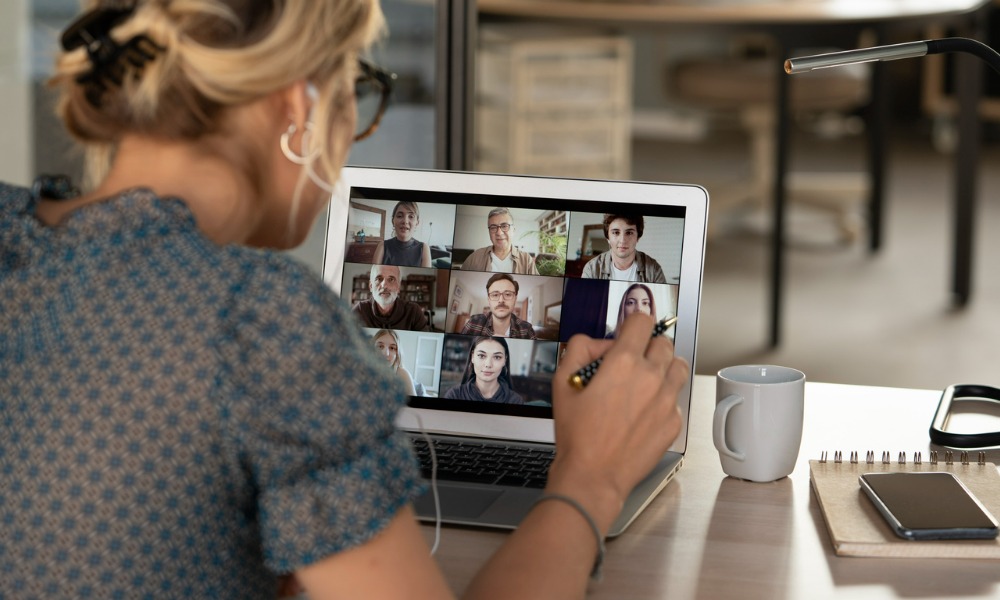
Gen Z and Millennials more likely to feel left out in online meetings, finds report

We’ve all heard it before: Gen Z and Millennials and their technology are tech-savvy. But they may actually be struggling when it comes to hybrid meetings.
Gen Z and Millennials are two to three times as likely as Gen X and Boomers to say they feel left out during hybrid meetings, according to a report from Jabra, a provider of audio, video, and collaboration solutions.
In contrast, Gen X and Boomers are roughly two times as likely to say they never feel left out of a conversation.
The pandemic may have something to do with this trend, said Paul Sephton, head of brand communications at Jabra, in talking with HRD.
“When it comes to how they should be interacting and engaging in modern workplaces, many [Gen Z and Millennial workers] haven't had that history of in-person face time or working in a traditional office. And so they really had to learn on the fly how to navigate a modern workspace – perhaps [it’s because of them] having only joined the workforce midway through the pandemic.”
This is a problem considering that 56% of Boomers reported that they are in the office five days a week versus 0% of Gen Z and 20% of Millennials.
“While we might have thought older generations, perhaps, were going to be feeling greater levels of discomfort with these virtual environments, there's actually been a lot of navigation for younger generations to get through as well.”
Employees' connection to their work has the "greatest impact" on overall job satisfaction, according to a previous report.
Over two-thirds of workers are feeling the pressure to turn on their cameras during meetings, according to the Jabra survey of 1,845 knowledge workers in the United States, the United Kingdom, France, Germany, Poland, and Japan, conducted between April 13 and 21, 20213.
And being on video increases trust, with nearly 80% of respondents reporting they find their colleagues to be more trustworthy when they have their camera turned on during meetings.
However, “there was a much greater sense of pressure, for example, to always have your video on if you were in that Gen Z or Millennial age demographic or category,” said Sephton.
Previously, Poly, part of HP's portfolio of hybrid work solutions, partnered with etiquette authority Debrett's to develop a global etiquette for hybrid workplaces, ruling many of the hybrid "quirks" as things to avoid.
People have adapted to virtual meetings, with nearly 53% of respondents reporting they are more comfortable joining meetings on video versus in-person, according to Jabra.
However, 31% of employees say they're hesitant to do video calls in a meeting room because they're less comfortable with the technology compared to just using their own laptop. This, however, does not mean that meeting rooms no longer have value, said Sephton.
“We still see a really high value in face-to-face meetings and a positive sentiment overall around meeting rooms.”
However, meeting rooms are in need of improvements, he said.
“The challenge has been that meeting rooms aren't standardized and they're not equipped in such a way that they're easy to navigate at the moment. And also, we know that there's still about 100 million meeting rooms that aren't equipped at all with technology.”
HR and business leaders are being urged to work together to develop hybrid work policies as a previous study suggests that having a one-size-fits-all approach might not be the best way to go.
Letting Gen Z and Millennial workers feel left out is bad for business, especially at a time when many workers are leaving and employers are struggling to fill job openings, said Sephton.
His idea for a solution: “A combination of having the right spaces and equipping them with the right technology, and then coming up with a leadership culture that backs that up and supports the workforce across every generation is what's going to matter most in the coming months, if we want to keep employees engaged in their work.”
But there is no silver bullet solution, said Sephton.
“There is no one size fits all. It's down to team leaders and individual managers to understand the people on their teams, and meet them with flexible ways of working.
“That isn't necessarily [about] mandating everyone come back into the office on a certain day in order to drive interaction or social connection, but really figuring out the unique needs of that team and its makeup, and then fostering a culture in a way that is supporting everybody.”